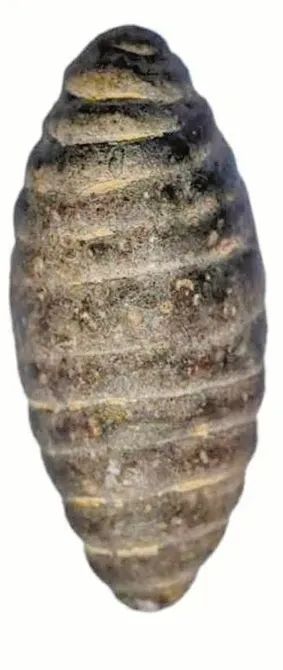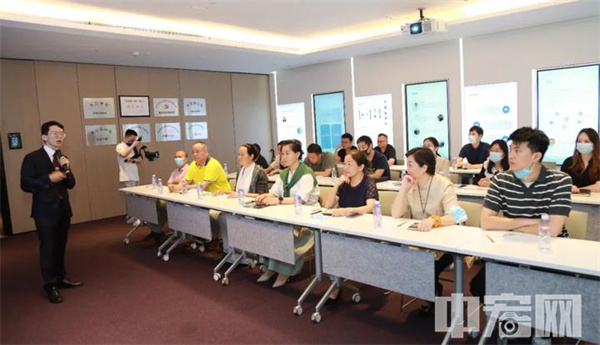The Silk carving silkworm pupae was unearthed in the Shangguo site of Wenxi County, Yuncheng
Author:Published by Shanxi Time:2022.07.18
On July 15, the Shanxi Provincial Institute of Archeology released the latest archeological results. In June of this year, a stone carving silkworm pupae was unearthed from the Guo Guo site, which was at least 5,200 years ago, adding a new physical object to the study of the southwest Shan west weaving industry.
The tomb of Shangguo City and Qiujiazhuang is located in the southeast of Wenxi County. It is a national key cultural relics protection unit. Since 2018, the Shanxi Provincial Institute and other units have carried out a series of archeological work on the site, and there are precious cultural relics such as "Hou Hou", "Jia Zi" 匜, and "刖 囿 囿". From March 23 to June 23 this year, Shanxi Province held a "2022 field archeological technology training course". 18 students from the province and the province's direct Wenbo system units participated in the three -month training and were in the three -month training and were in Shangguo City site and Qiujiazhuang's tomb group on the scene of 500 square meters were archeological excavations. The various relics found this time include 2 gray ditch, 56 gray pit (including 7 seats in the Yangshao period), 2 stoves, 1044 pottery, 183 pottery, 14 jade, 157 stone artifact 157 123 pieces, 4 pieces of small copper, 7 copper slag, 46 shellfish, 2 ironware, 4 eggshells, and 1 fruit core, a total of 1,585 pieces. The most important discovery was that in a half -ground pocket -shaped house with H50, a stone carved silkworm pupae was unearthed in the Yangshao period.

Stone carving silkworm pupa, 2.8 cm long, and a maximum abdominal diameter of 1.2 cm.
This stone carving silkworm pupae are 2.8 cm long and the maximum abdominal diameter is 1.2 cm. It is unearthed in a semi -cave -type house. Archaeological experts speculate on the unearthed pottery films that this house belongs to the early stage of Yangshao, about 5200 years. The house is divided into 4 layers of accumulation. Archaeologists found this stone carving silkworm pupa in the 1st floor.
Research librarians of the Shanxi Provincial Institute of Archaeological Research said that in the past century, the relics related to silkworm culture have been unearthed in many places in Yuncheng. As early as 1926, Li Ji, the father of Chinese archeology, led a team to find "half a silkworm cocoon" at Xiyin Village site more than 10 kilometers away from the Shang Guo site, which is generally considered to have a history of about 5500 years. In 1960, archeology, archeology, Workers found a "pupa -shaped pottery" in Xiwang Village, Ruicheng County; in the past three or four years, archaeologists excavated 5 stone carving silkworm pupae and 1 ceramic silkworm pupae at the site of Shixian Village in Xiaxian County. Essence At present, the inheritance of multiple cocoons and silkworm pupae found in Yuncheng is orderly, indicating that the ancestors of the Yangshao culture period south of Shanxi have raised silkworms. This time, the stone carving silkworm pupae discovered again, providing important clues for the research of the origin and communication of silk.

Source | Shanxi Daily
Edit | Zhang Yinan

- END -
Putuo "Store Primary Er" helps companies to settle "new home"

Not long ago, eggshell pet supplies (Shanghai) Co., Ltd. (hereinafter referred to ...
Shenzhen Xinlian Association and Nanshan District New Association organized the online and offline a

Recently, under the guidance of the United Front Work Department of the Shenzhen M...